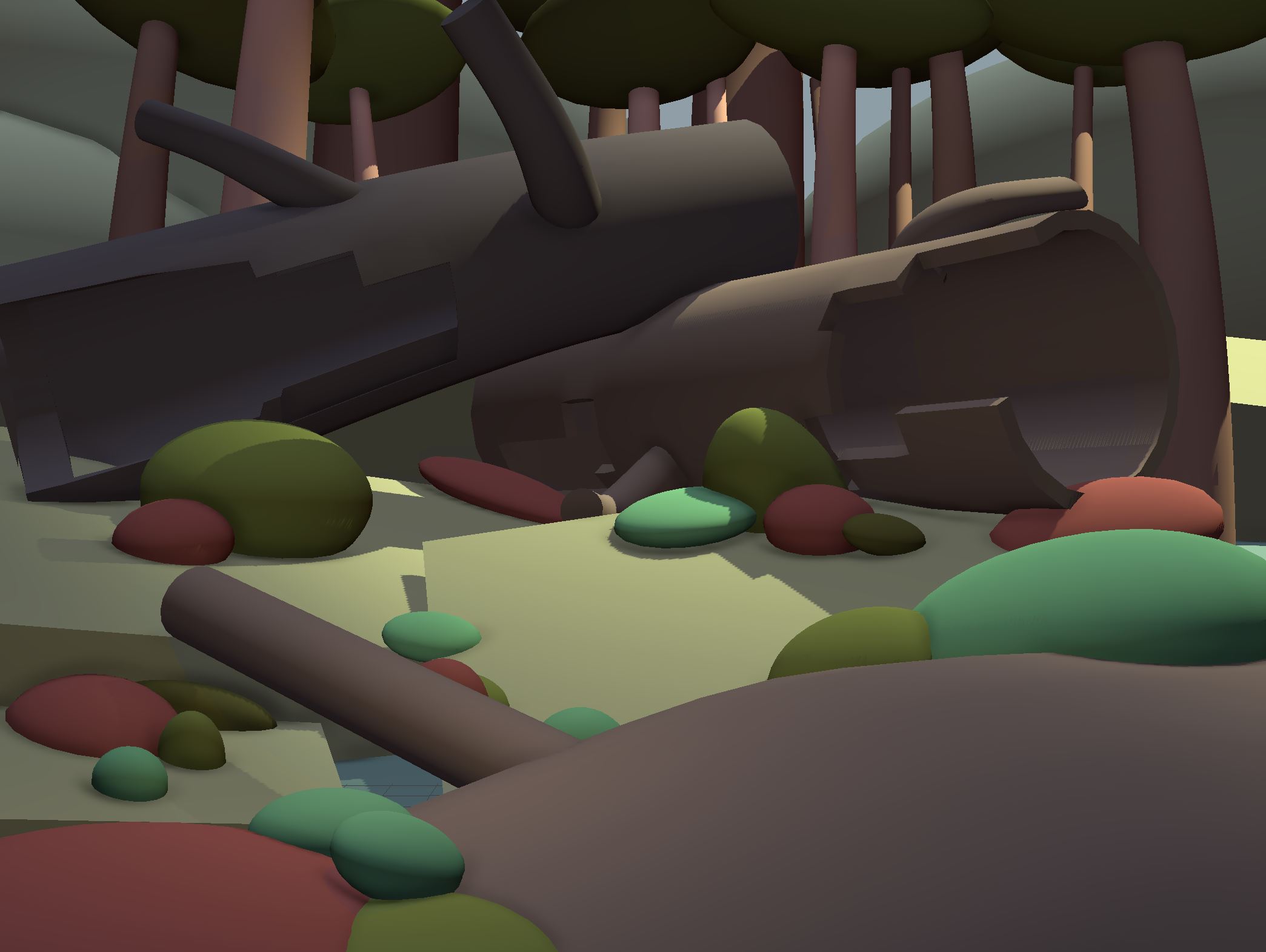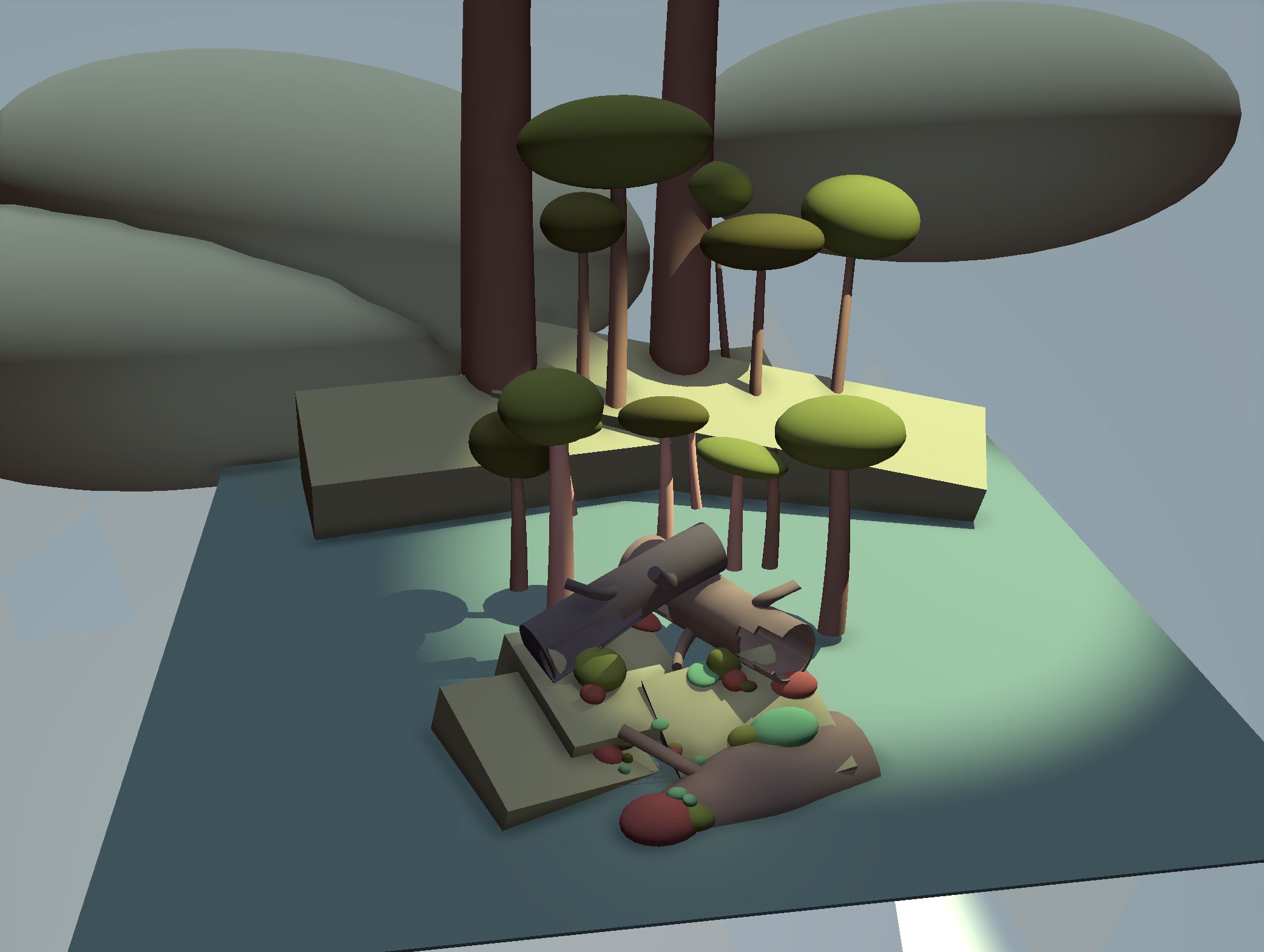My name is Sandra Rosado and I am a digital artist. I work mostly in a mix of 2D and 3D, where 3D is used to create models and my skills in 2D are used to texture those models. Programs I use are Maya, Zbrush, Unity, and Unreal 4, although I’m very interested in switching to 3DS Max for modeling purposes.
I create 3D environments and render them using low-memory game engine screen shots as opposed to high-detail programs such as Arnold or Keyshot. The challenge of rendering in a game engine is that I am attempting to create a similar quality and detail to the high-detail renderings, but attempting to make it use up as little cpu memory as possible. My environments are “organic”, meaning that they rarely incorporate any kind of mechanical or man-made object. In 3D terms, I stray away from “hard-surface” modeling and prefer to create “organic” models. I have a great love of plants and all things vegetation, specifically trees, and try to highlight those things in my models. I enjoy creating plant subject for two reasons: one is that I simply just enjoy greenery, and have always had a love for all things that grow; two is that there is a particular challenge in creating great looking plants in 3D, especially ones that are low-poly.
As far as style is concerned, I’ve never considered myself to hold to a distinct style. Recently, I have been enjoying clean and simple designs, where readability and immediate distinction are the key qualities. I also enjoy this in painting styles, where local colors of a particular color scheme are used and the scene would use the full value range for the most visual contrast. At the moment, I find value in keeping a scene visually uncluttered.
Themes I’ve worked with have usually been for the simple aesthetic of the image, but have ranged from personal narration to political or social commentary. More recently I have been interested in socioeconomic issues dealing with the complications of race and poverty. In contrast to that, I am also interested in the utopian aspect of artwork: creating it in joy for the sake of it being enjoyed by the viewer. I think there is a personal connection people can make with a work depending on the state of mind the artist created it in; I personally want that connection to, overall, be joy.
The only way I have ever created my work to be distinctive is to create work that could be considered the most visually appealing in a group of works. The standard I tend to use for visual appeal is the very technical foundations that most visual artists learn: composition, color theory, contrast, etc. To me, a beautiful piece of work is one that is also technically appealing. I personally strive to distinguish myself using technical appeal.
One work that I am very interested in is the environment artwork of “Divinity Original Sin II”. The title is of a strategy based game, where the player is a character seeking divinity through mortal means. Each level and environment is beautifully detailed, but also simple enough as to not affect the complex game-play. I really admire the immense work that went into creating the environments, as each level is unique down to the type of grass. A simple screenshot of the game would not be enough information to simply write off as a low-memory, low-poly game screen, and I think that alone is impressive. Here (https://www.artstation.com/artwork/3nVPB) you can find one artists’ environment work which I believe serves as a great example of the quality of work throughout the game.











